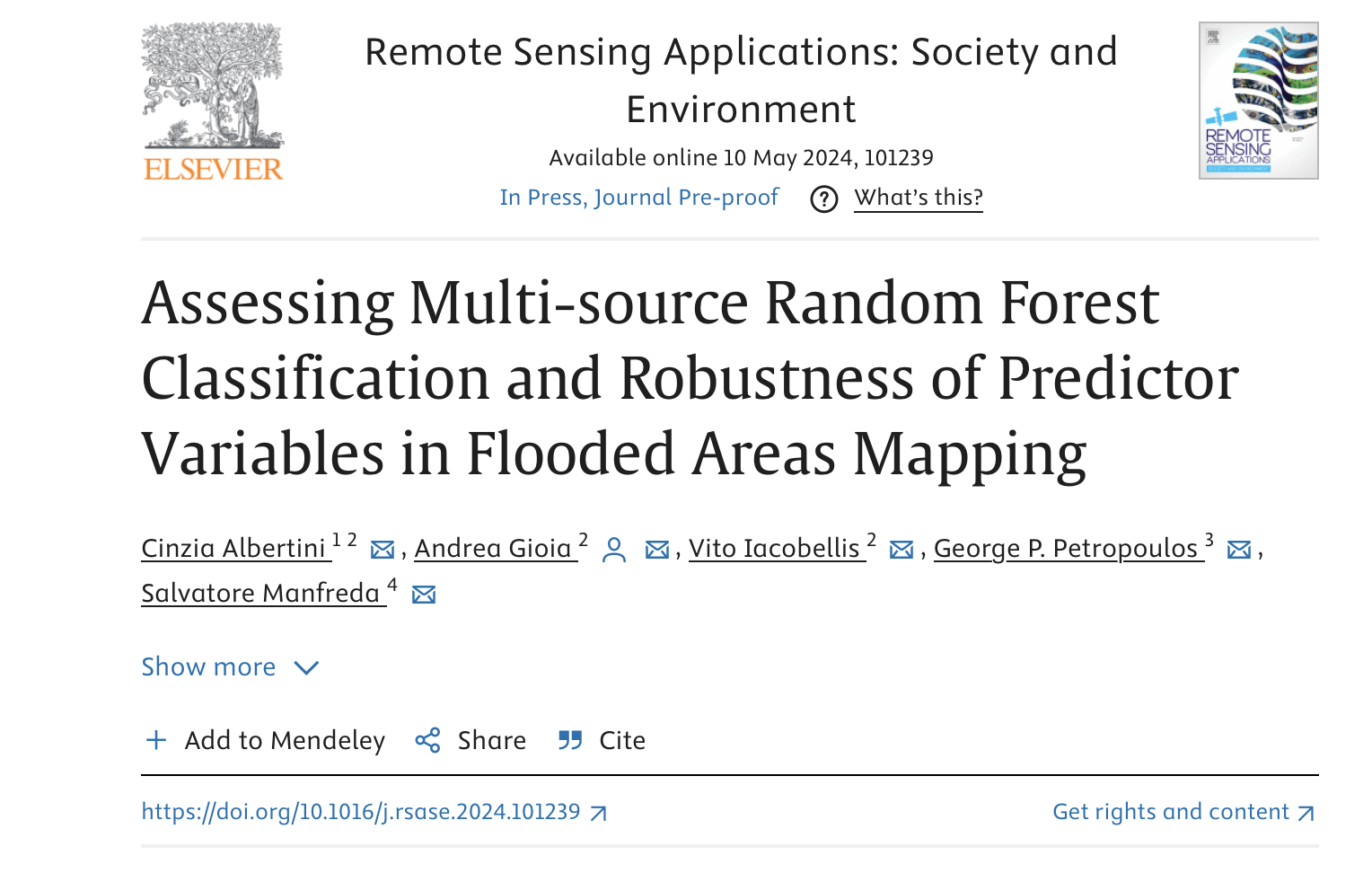Flood extent delineation techniques have benefited from the increasing availability of remote sensing imagery, classification techniques and the introduction of geomorphic descriptors derived from Digital Elevation Models (DEM). On the other hand, high-performing Machine Learning (ML) methods have allowed for the development of accurate flood maps by integrating several predictor variables into supervised or unsupervised algorithms. Among others, Random Forest (RF) is a powerful and widely applied ML classifier, providing accurate predictions also with complex datasets and for varying parameters set. In the present study, the effectiveness of this algorithm for mapping flooded areas was evaluated. Various geospatial data sources were integrated, including morphological indicators, such as the Geomorphic Flood Index (GFI), Sentinel-2 bands, multispectral indices, and Sentinel-1 polarizations. The reliability of the predictor variables under different training sample sizes was evaluated and the accuracy of the RF classifier was assessed. Moreover, by exploring the algorithm ability to identify the most important variables, the predictors contributing the most to the classification were identified and their stability for varying training parameters was investigated. To gauge the adaptability and consistency of these features, we applied our analyses to different study areas around the World. The results indicate that certain predictors displayed remarkable stability across different sample sizes and remained robust under various training parameters. However, some variability in the algorithm structure and the features related to the specific complexities of each considered study case was also observed.
How to cite: Albertini, C., A. Gioia, V. Iacobellis, G. P. Petropoulos and S. Manfreda, Assessing Multi-source Random Forest Classification and Robustness of Predictor Variables in Flooded Areas Mapping, Remote Sensing Applications: Society and Environment, (doi: 10.1016/j.rsase.2024.101239) 2024. [pdf]
